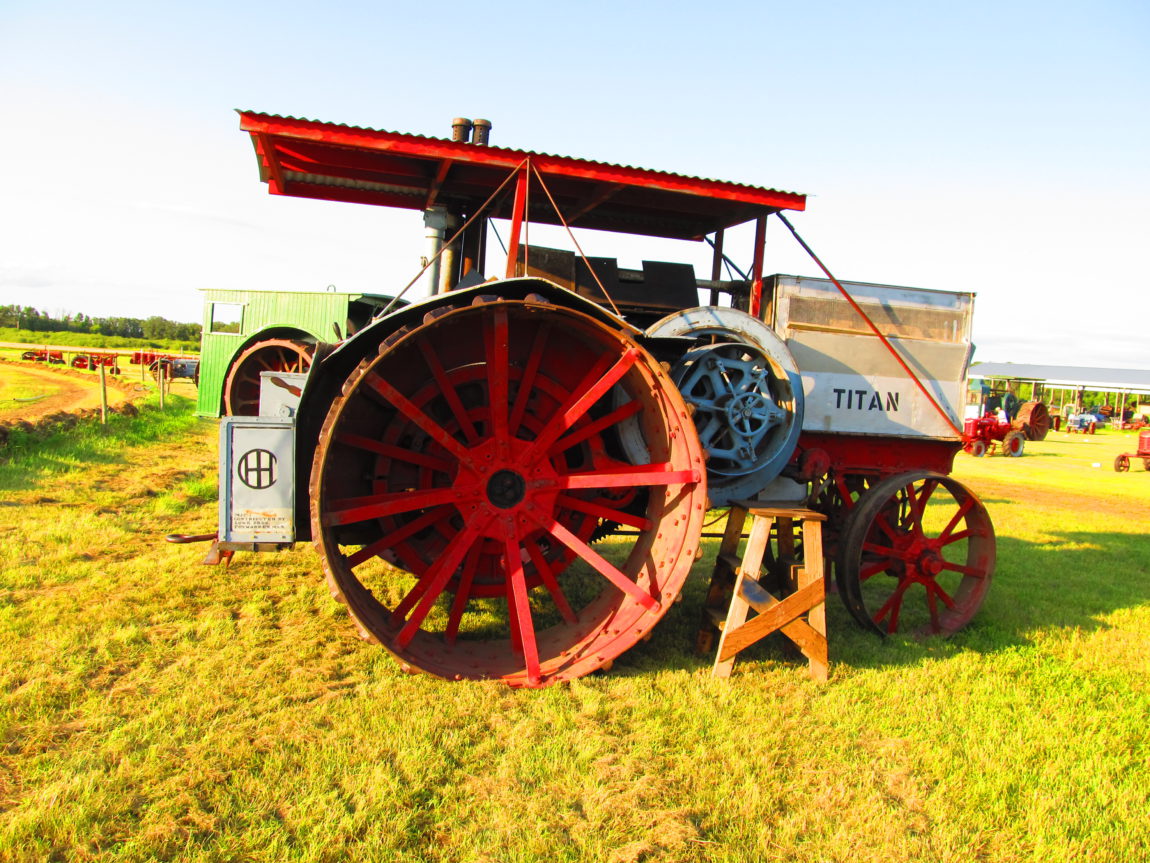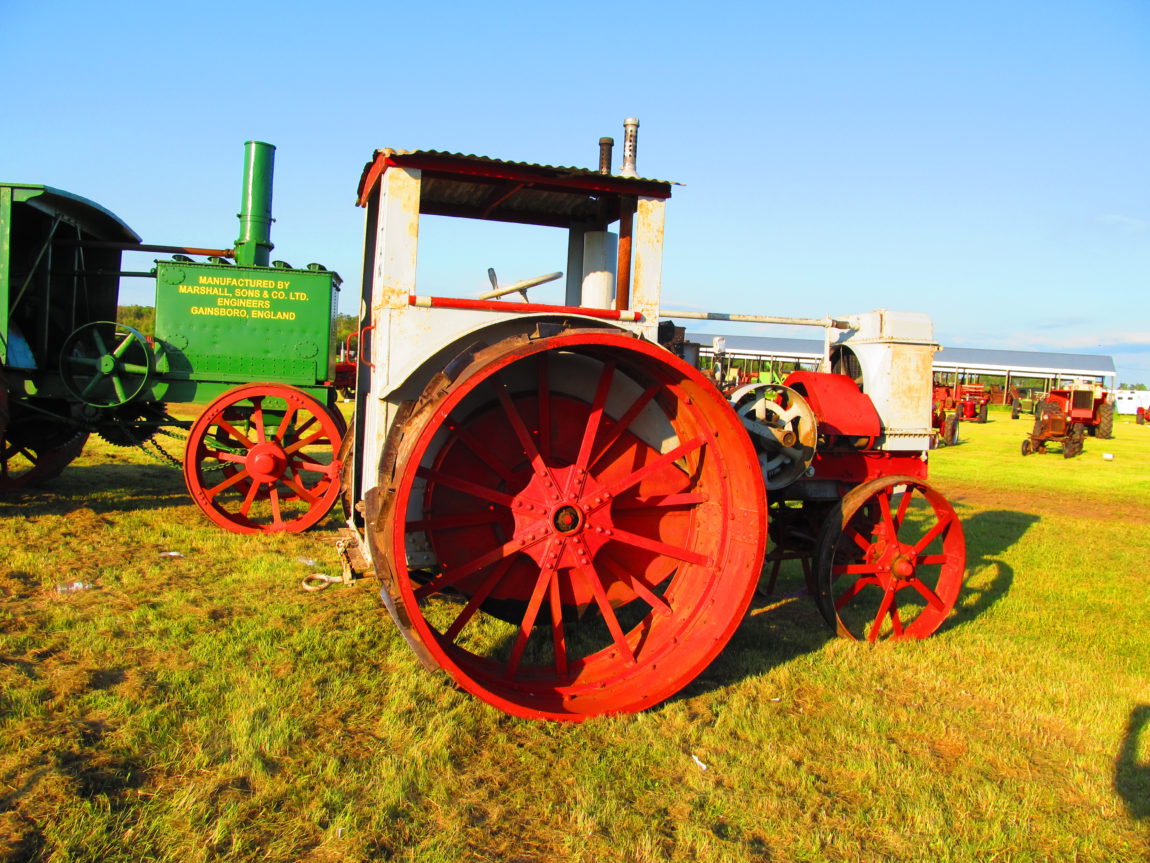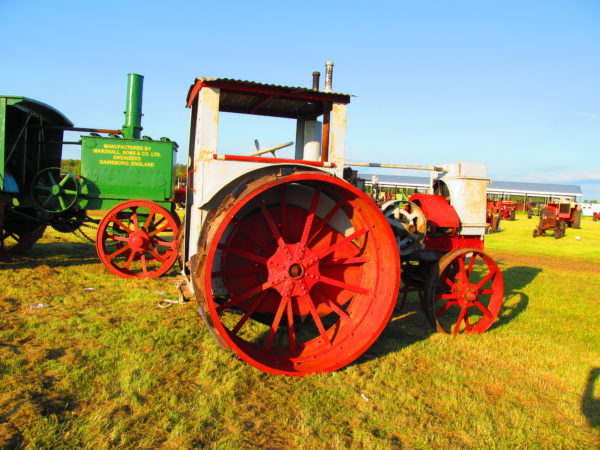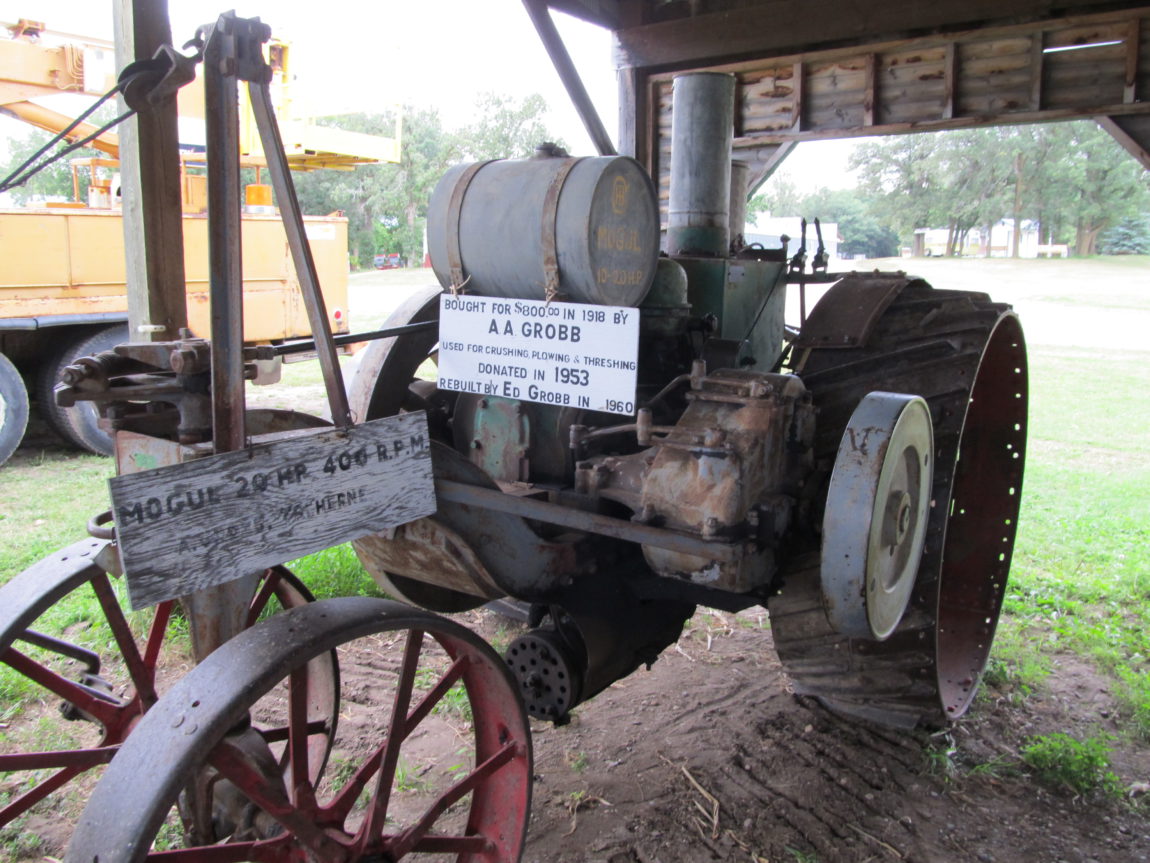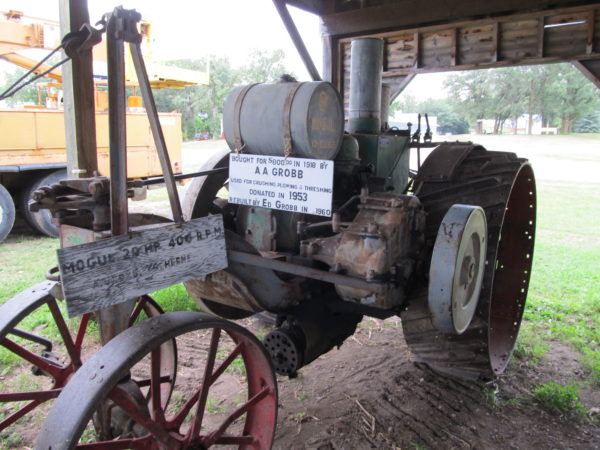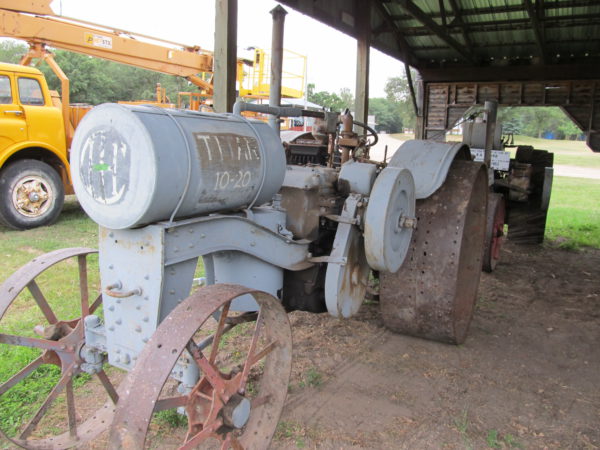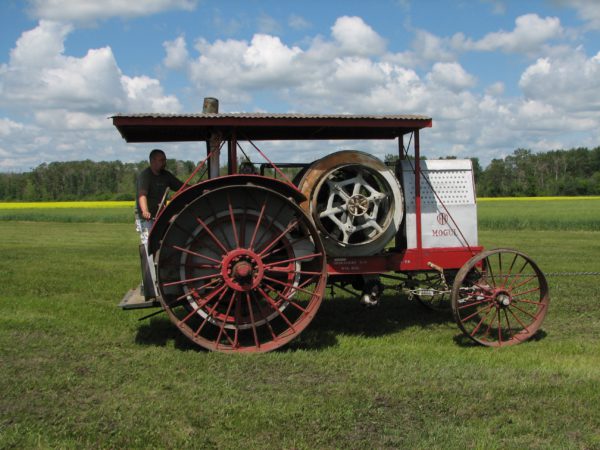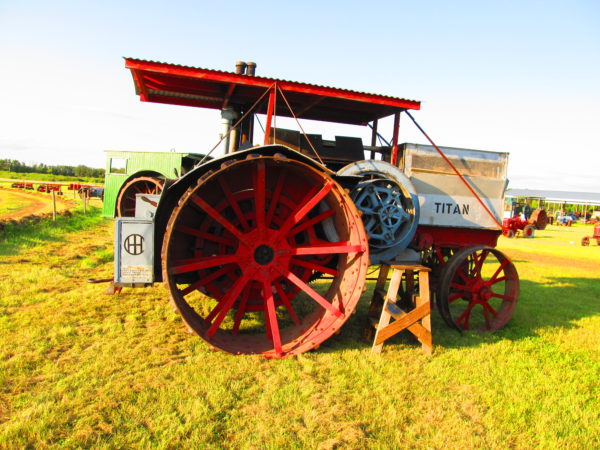
The Manitoba Agricultural Museum collection features an IHC Titan Type D 45 that was donated to the Museum by the Lowe Brothers of Foxwarren, Manitoba.
The Type D 45 had its origin in the IHC Reliance Type D of 1910. IHC’s Milwaukee plant began producing the 20 Horsepower Reliance Type D using IHC “Famous” engine design which was also used in IHC’s Type B 20 horsepower tractor. The Type D 25 horsepower tractor soon followed and then the Reliance Type D 45 horsepower appeared. The Reliance Type D 45 featured a 2 cylinder engine that was the first engine specifically designed for use in a tractor by IHC. A distinctive rectangular tank type radiator was developed for the Reliance Type D 45. In 1911, the Reliance models were renamed Titan.
The Type D 45 featured a 2 cylinder horizontal engine running at 335 RPM with force feed oiling, make and break ignition, hit and miss governor and a tank type radiator with a pump. The transmission offered one speed ahead and one speed in reverse. A spur gear drove onto the live rear axle through a bull gear with a differential in the right rear wheel. The Type D 45 developed 45 horsepower on the belt and 27 horsepower at the drawbar. It was rated as being able to pull a 10 bottom plow.
The Type D 45 was replaced in 1914 by the Titan 30-60. Between 1911 and 1914, 1319 Type D 45s were built.
The Titan tractors with multiple cylinders, in general, featured engine cylinders that laid side by side where as the Mogul designs featured opposed cylinder engine designs.
A long time resident of the Elton district recounts that the Vance family of the area possessed what he thinks was a Titan 45. However by the time he was old enough to remember this tractor, it was well into the 1930s and the tractor was badly worn. By that time, it was started by the expedient of wrapping a long rope around the belt pulley a number of times and then attaching the free end of the rope to a single tree with a horse harnessed to the single tree. The horse was then started forward at a trot. The engine then began revolving, hopefully firing up. On one occasion, the operator forgot to retard the ignition to start the tractor, the tractor then fired at the top of the piston stroke and ran backwards. The tractor was still powerful enough that it exerted enough pull to snatch the horse backwards, taking the animal off of its feet. Needless to say this particular horse was never able to be used around the tractor after that experience! Even as part of team on a sheaf wagon at threshing.



